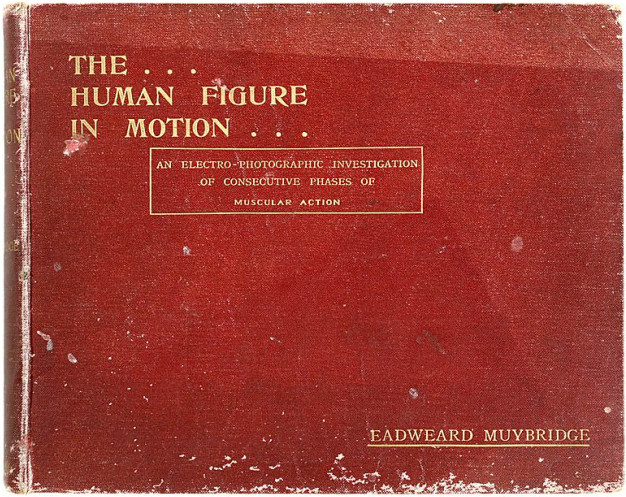Eadweard Muybridge: The Human Figure in Motion (1901–)
Filed under book | Tags: · history of photography, motion, photography

The Human Figure in Motion. An Electro-Photographic Investigation of Consecutive Phases of Muscular Actions
First published in Philadelphia, 1901
Third impression
Publisher Chapman & Hall, London, 1907
277 pages
PDF (no OCR, updated on 2015-1-21)
Introduction (HTML)
Michael North: Camera Works: Photography and the Twentieth-Century Word (2005)
Filed under book | Tags: · art, avant-garde, cinema, film, film history, history of photography, literature, modernity, photography

Camera Works is about the impact of photography and film on modern art and literature. For many artists and writers, these new media offered hope of new means of representation, neither linguistic nor pictorial, but hovering in a kind of utopian space between. At the same time, the new media introduced a dramatic element of novelty into the age-old evidence of the senses. For the avant-garde, the challenges of the new media were the modern in its most concentrated form, but even for aesthetically unadventurous writers they constituted an element of modern experience that could hardly be ignored.
Camera Works thus traces some of the more utopian projects of transatlantic avant-garde, including the Readie machine of Bob Brown, which was to turn stories and poems into strips of linguistic film. The influence of photography and film on the avant-garde is traced from the early days of Camera Work, through the enthusiasm of Eugene Jolas and the contributors to his magazine transition, to the crisis created by the introduction of sound in the late 1920’s.
Subseguent chapters describe the entirely new kind of sensory enjoyment brought into modern American fiction by the new media. What Fitzgerald calls “spectroscopic gayety,” the enjoyable diorientation of the senses by machine perception, turns out to be a powerful force in much American fiction. The revolutionary possibilities of this new spectatorship and its limitations are pursued through a number of examples, including Dos Passos, James Weldon Johnson, and Hemingway. Together, these chapters offer a new and substantially different account of the relationship between modern American literature and the mediatized society of the early twentieth century.
With a comprehensive introduction and detailed particular readings, Camera Works substantiates a new understanding of the formal and historical bases of modernism. It argues that when modern literature and art respond to modernity, on a formal level, they are responding to the intervention of technology in the transmission of meaning, an intervention that unsettles all the terms in the essential relationship of human consciousness to the world of phenomena.
Publisher Oxford University Press US, 2005
ISBN 0195173562, 9780195173567
255 pages
PDF (updated on 2013-2-24)
Comment (0)Jacques Derrida, Bernard Stiegler: Echographies of Television: Filmed Interviews (1996/2002)
Filed under book | Tags: · literature, mass media, media studies, philosophy, photography, recording, sociology, technology, teletechnologies, television

“In this book, Jacques Derrida talks with Bernard Stiegler about the effect of teletechnologies on our philosophical and political moment. Improvising before a camera, the two philosophers are confronted by the very technologies they discuss and so are forced to address all the more directly the urgent questions that they raise. What does it mean to speak of the present in a situation of “live” recording? How can we respond, responsibly, to a question when we know that the so-called “natural” conditions of expression, discussion, reflection, and deliberation have been breached?
As Derrida and Stiegler discuss the role of teletechnologies in modern society, the political implications of Derrida’s thought become apparent. Drawing on recent events in Europe, Derrida and Stiegler explore the impact of television and the internet on our understanding of the state, its borders and citizenship. Their discussion examines the relationship between the juridical and the technical, and it shows how new technologies for manipulating and transmitting images have influenced our notions of democracy, history and the body. The book opens with a shorter interview with Derrida on the news media, and closes with a provocative essay by Stiegler on the epistemology of digital photography.”
First published as Echographies de la télévision – Entretiens filmés, Galilée, Paris, 1996.
Translated by Jennifer Bajorek
Publisher Polity Press, 2002
ISBN 0745620361, 9780745620367
174 pages
PDF (no OCR; updated on 2012-7-19)
Comment (0)
